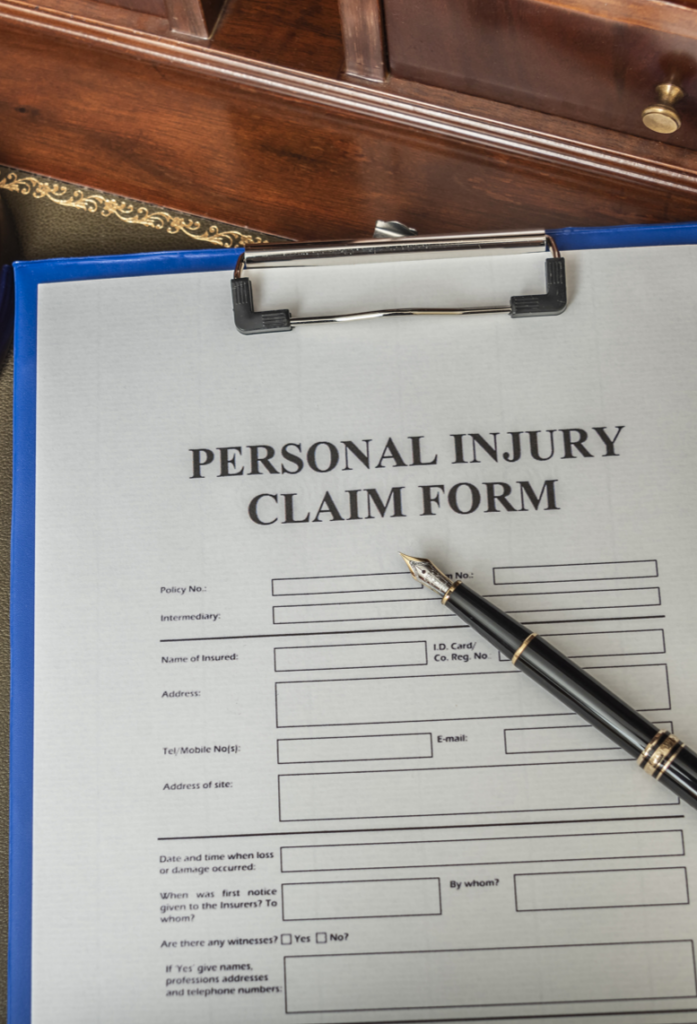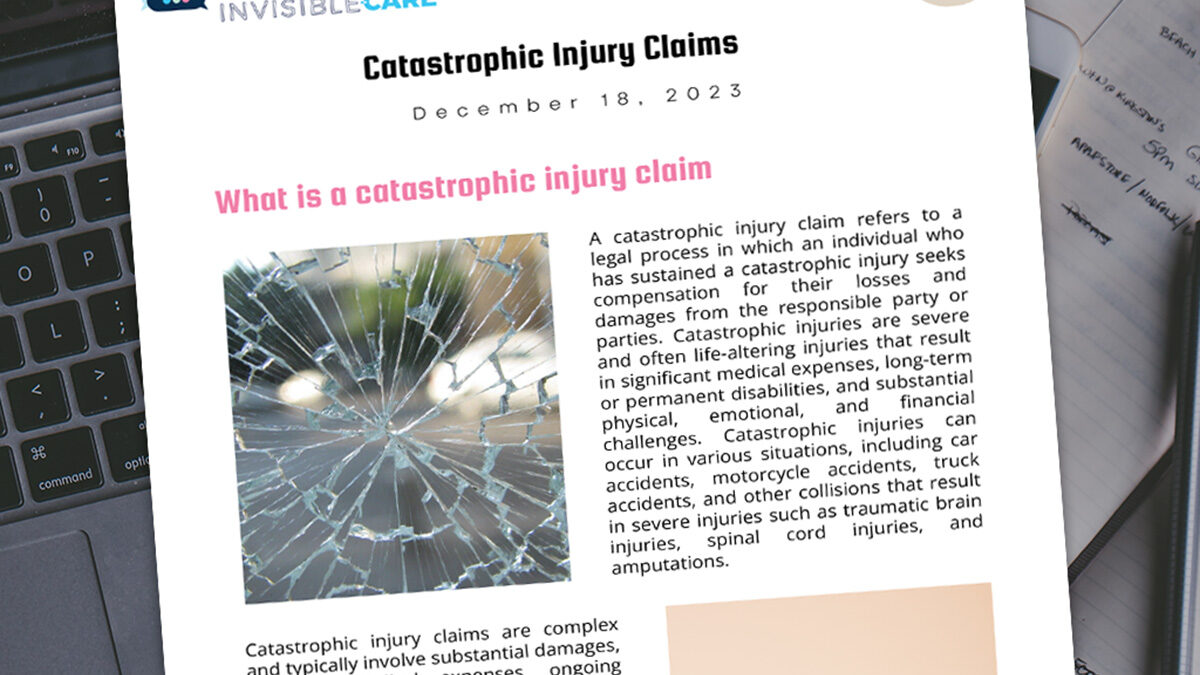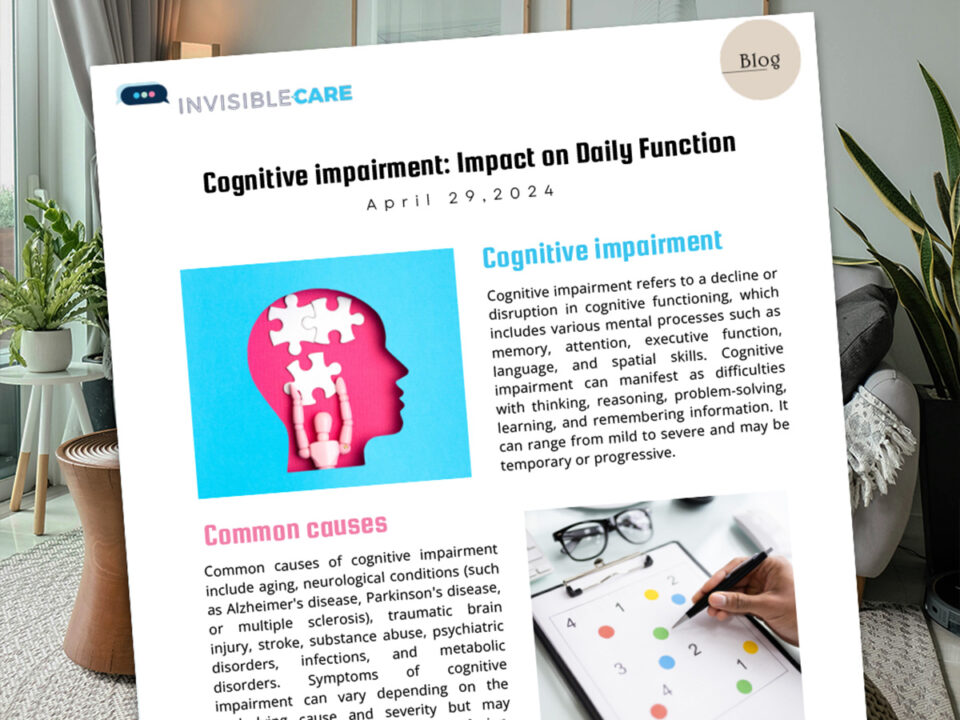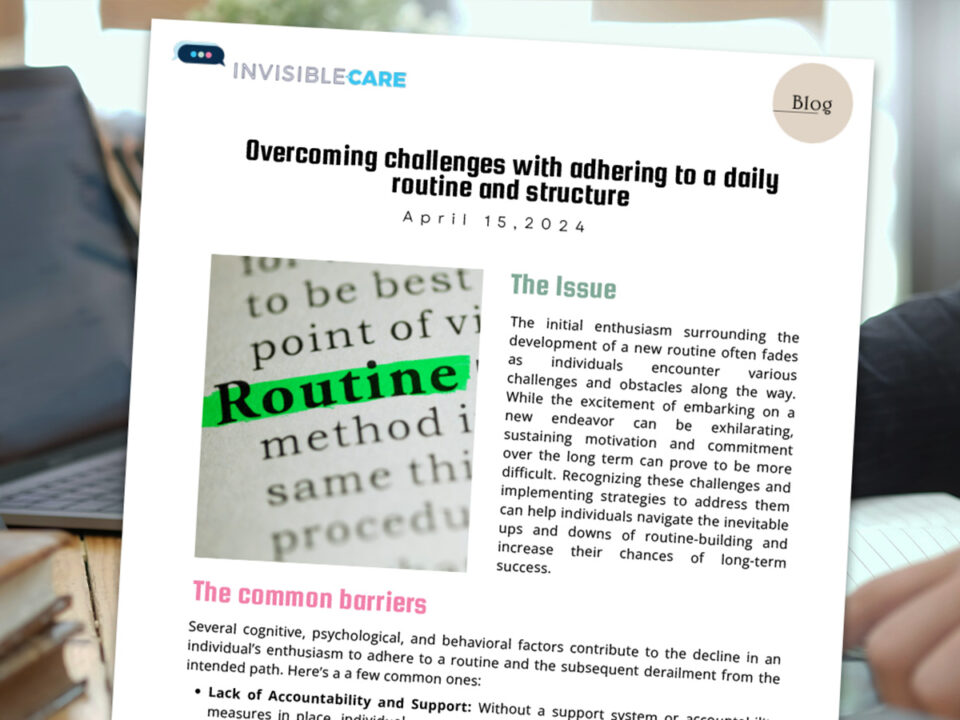
Invisible-care Inc. Awarded Corporate Vision Small Business Awards
December 15, 2023
Highlights of 2023: Looking Back, Moving Forward
December 22, 2023What is a Catastrophic Injury Claim
A catastrophic injury claim refers to a legal process in which an individual who has sustained a catastrophic injury seeks compensation for their losses and damages from the responsible party or parties. Catastrophic injuries are severe and often life-altering injuries that result in significant medical expenses, long-term or permanent disabilities, and substantial physical, emotional, and financial challenges. Catastrophic injuries can occur in various situations, including car accidents, motorcycle accidents, truck accidents, and other collisions that result in severe injuries such as traumatic brain injuries, spinal cord injuries, and amputations.
Catastrophic injury claims are complex and typically involve substantial damages, including medical expenses, ongoing rehabilitation costs, lost income or earning capacity, pain and suffering, and emotional distress. Due to the severity of these injuries, the compensation sought in catastrophic injury claims is often substantial to cover the long-term needs and financial burdens of the injured party. The goal of a catastrophic injury claim is to obtain fair compensation that can help the injured person receive the necessary medical care, support, and resources to maximize their quality of life and address their long-term needs.
Catastrophic Determination
In many cases, catastrophic injury determinations are made within the context of personal injury claims, insurance claims, or workers’ compensation claims. Here are some general steps and considerations involved in determining catastrophic injuries:
- Medical Assessment
- Diagnosis and Documentation
- Functional Assessment
- Consultation with Specialists
- Vocational and Occupational Assessments
- Independent Medical Examinations (IMEs)
- Legal representation


SABS Criterion 8
The Catastrophic Impairment Criterion 8 under the Statutory Accident Benefits Schedule (SABS) in Ontario, Canada, assesses an individual’s level of impairment in various domains of function to determine whether they meet the criteria for catastrophic impairment. These domains of function are used to evaluate the extent of an individual’s impairments resulting from a brain injury or a combination of brain injury and other impairments.
Domains of function (Criterion 8)
The domains of function used to determine catastrophic injury eligibility take into consideration the following aspects:
- Activities of Daily Living (ADLs): This domain assesses the individual’s ability to perform basic self-care activities independently, such as bathing, dressing, grooming, toileting, and feeding.
- Mobility: Mobility evaluates the individual’s ability to move around and perform tasks that require physical movement, including walking, transferring in and out of a bed or chair, and using mobility aids like wheelchairs or walkers.
- Cognition: The cognitive domain assesses the individual’s cognitive functions, including memory, attention, concentration, problem-solving, and decision-making abilities.
- Communication: This domain evaluates the individual’s ability to communicate effectively, including speech and language skills, comprehension, and expression.
- Psychosocial Functioning: Psychosocial functioning assesses the individual’s emotional and social well-being. It considers factors such as mood, behavior, relationships, and the ability to participate in social activities.
- Behavioural and Emotional Functioning: This domain focuses on the individual’s behavior, emotional regulation, and mental health. It evaluates any behavioral or emotional changes resulting from the injury.
- Physical Functioning: Physical functioning assesses the individual’s overall physical capabilities, including strength, coordination, endurance, and the ability to perform specific tasks or activities.
- Activities of Vocational and Occupational Nature: This domain examines the individual’s ability to engage in vocational and occupational activities. It considers the impact of the impairment on the person’s ability to work or pursue their chosen career.
- Community and Social Integration: This domain evaluates the individual’s ability to participate in community and social activities, including leisure, recreation, and engagement with the community.






1 Comment
You have remarked very interesting details! ps nice internet site.Blog monetyze